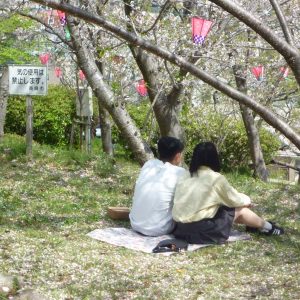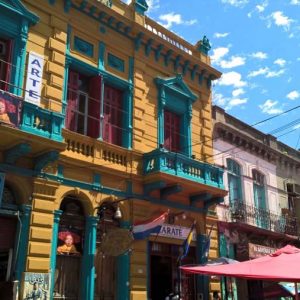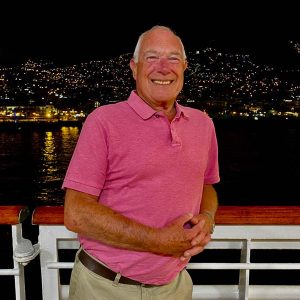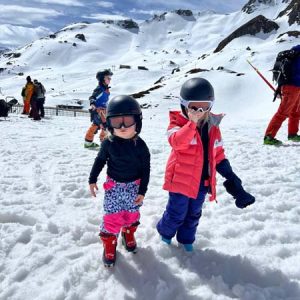Felice Soru, founder of Silver Travel Advisor partner Sardatur Holidays, told me before I went that a trip to Sardinia is a discovery. The island is like a separate continent, with different landscapes and cultures – even languages – and with a wild, ungovernable centre.
I went to the central west coast, to the province of Oristano, an area of Sardinia that is also wild and relatively unspoiled, which is rich in history and with plenty of nature, activities, food and wine to enjoy, whilst remaining accessible.
History
Unpeel layer upon layer of history as you explore this continuously surprising area.
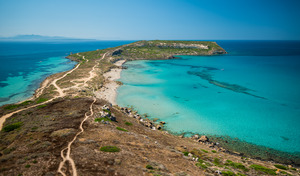 Go to the Sinis peninsula, a marine protected area, to see the remains of the ancient settlement of Tharros. Reputed to have been founded by the Phoenicians towards the end of the 8th century BC, it was one of the most important cities in Sardinia through the Punic age, from the 6th century BC until Roman occupation. But there is some evidence suggesting that Tharros was occupied before the Phoenicians, by the Nuraghic civilisation in the much earlier Bronze Age.
Go to the Sinis peninsula, a marine protected area, to see the remains of the ancient settlement of Tharros. Reputed to have been founded by the Phoenicians towards the end of the 8th century BC, it was one of the most important cities in Sardinia through the Punic age, from the 6th century BC until Roman occupation. But there is some evidence suggesting that Tharros was occupied before the Phoenicians, by the Nuraghic civilisation in the much earlier Bronze Age.
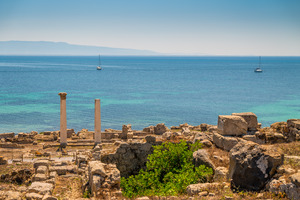 There are an estimated 7,000 examples of nuraghe, stone-built tower-fortresses from this ancient civilisation, dotted around Sardinia. One of the most important is the nuraghe Losa, near the village of Abbasanta. Here you’ll see a large complex construction in the shape of an old tomb, with a central triangular shape. A turreted wall is linked to this impressive core, and surrounded by later additions from Punic, Roman and Middle Ages occupation.
There are an estimated 7,000 examples of nuraghe, stone-built tower-fortresses from this ancient civilisation, dotted around Sardinia. One of the most important is the nuraghe Losa, near the village of Abbasanta. Here you’ll see a large complex construction in the shape of an old tomb, with a central triangular shape. A turreted wall is linked to this impressive core, and surrounded by later additions from Punic, Roman and Middle Ages occupation.
Back on the Sinis peninsula, visit San Giovanni di Sinis, one of Sardinia’s oldest and most important churches. Built with blocks of sandstone, probably brought from nearby Tharros, it is Byzantine, with distinctly Arabesque features.
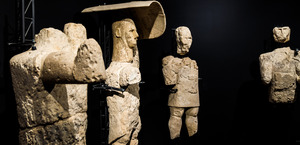 And one of the most important historic finds of recent years on this beguiling promontory is the Giants of Mont’e Prama. Farmers working the land a couple of kilometres from Cabras in the 1970s uncovered remains from the late Nuraghic period. Painstaking work has since pieced together Sardinia’s version of China’s terracotta warriors. As of today, 25 statues of large stone men – including warriors, archers and boxers – have been reconstructed, some of which are exhibited in Cabras Museum.
And one of the most important historic finds of recent years on this beguiling promontory is the Giants of Mont’e Prama. Farmers working the land a couple of kilometres from Cabras in the 1970s uncovered remains from the late Nuraghic period. Painstaking work has since pieced together Sardinia’s version of China’s terracotta warriors. As of today, 25 statues of large stone men – including warriors, archers and boxers – have been reconstructed, some of which are exhibited in Cabras Museum.
Nature
Wildlife abounds around Oristano. Flamingos inhabit the marshy lagoons, as do several rare aquatic bird species.
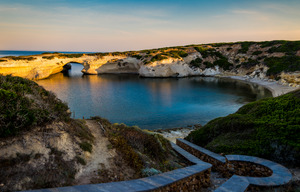 For breathtaking beaches, head to Putzu Idu or the quartz-laden “rice sand” of Is Arutas and Maria Erma. But my favourite was probably S’Archittu, taking its name from the photogenic rock arch, one of Sardinia’s largest natural bridges, and through which you can swim or kayak.
For breathtaking beaches, head to Putzu Idu or the quartz-laden “rice sand” of Is Arutas and Maria Erma. But my favourite was probably S’Archittu, taking its name from the photogenic rock arch, one of Sardinia’s largest natural bridges, and through which you can swim or kayak.
If you’re adventurous, drive further south to explore the largest sand dunes in Europe, at Piscinas on the remote Costa Verde, and formed by the natural forces of the Mistral. But don’t get stuck in the sand.
Go inland to discover the special environment of the Giara di Gesturi, a high volcanic plateau now rich in flora and fauna, and inhabited by the island’s cherished wild horses.
Activities
Swim from the many beaches. Play golf at Is Arenas. Hike, cycle or twitch in the nature reserves. Take a boat out to the tiny island of Mal di Ventre (Italian for tummy ache!) for a snorkelling or diving expedition. It was near here that a shipwreck was discovered as recently as 1989, uncovering a scarcely believable cargo of almost 1,000 trapezoidal lead ingots, each weighing 33 kg and inscribed by their Roman owners from the 1st century BC.
Towns
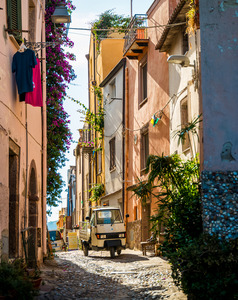 Oristano is the provincial capital but take the coast road north to enchanting Bosa. Explore the narrow cobbled streets of the centro storico, head ever upwards amongst the crumbling pastel-coloured houses towards Malaspina Castle, and for a dazzling view over the red-roofed town, down towards the river Temo, snaking back towards Bosa beach and marina.
Oristano is the provincial capital but take the coast road north to enchanting Bosa. Explore the narrow cobbled streets of the centro storico, head ever upwards amongst the crumbling pastel-coloured houses towards Malaspina Castle, and for a dazzling view over the red-roofed town, down towards the river Temo, snaking back towards Bosa beach and marina.
And enjoy the even more scintillating drive north along the coast – just into Sassari province – to Alghero, a vibrant Catalan fortified town, with towers, trebuchets and cannons a reminder of its more violent past.
Food and wine
Spaghetti con bottarga is a local food speciality, a simple but exceptional dish of pasta and mullet roe. Do NOT add cheese! Fregula (fregola) is the Sardinian equivalent of couscous, typically toasted semolina dough balls and often served with clams. Or try malloreddus, a gnocchi style pasta cooked with saffron and a tomato sauce. Porcheddu – roast suckling pig – is a prized dish but not one for vegetarians.
But even in a trattoria in a small village, you’re likely to enjoy simple food, from well-prepared local ingredients and served with a Sardo smile.
Sardinian wines are much improved in recent years. Try the local dry white Vernaccia di Oristano, or the red Cannonau, little known outside the island, both excellent.
Where to stay
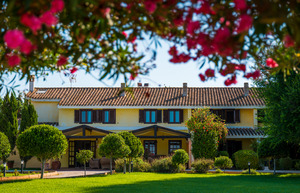 Head for the Is Benas Country Lodge, an intimate retreat tucked away on the road to Putzu idu. With only 18 bedrooms and outstanding food and service, it feels more like a private country house than a hotel. A little isolated, it is a quiet refuge but within reach of all the many fascinating gifts this lesser know part of Sardinia offers the mature and inquisitive traveller.
Head for the Is Benas Country Lodge, an intimate retreat tucked away on the road to Putzu idu. With only 18 bedrooms and outstanding food and service, it feels more like a private country house than a hotel. A little isolated, it is a quiet refuge but within reach of all the many fascinating gifts this lesser know part of Sardinia offers the mature and inquisitive traveller.
Silver Travel Advisor recommends Sardatur Holidays.

